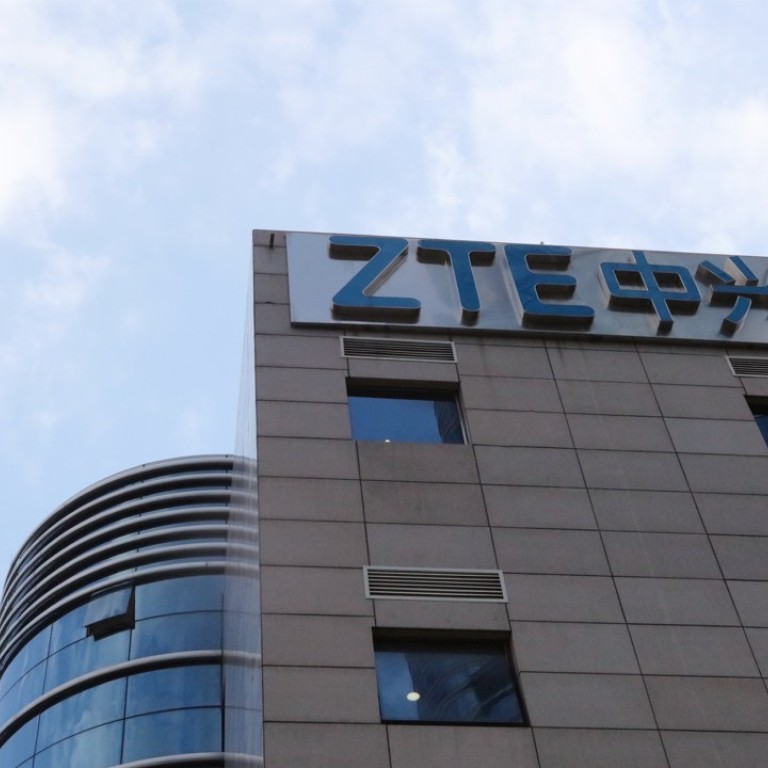
Trump tweet brings sense of relief, uncertainty at China's ZTE
Trump defended his move to help the Chinese company on Monday after coming under bipartisan criticism that it could jeopardize national security.
A sense of relief mixed with determination at ZTE Corp.’s China offices Monday after U.S. President Donald Trump appeared to rescue the company with a single Twitter post.
China’s No. 2 telecommunications-equipment maker had ceased most operations after the U.S. imposed a seven-year ban on its ability to buy technology from American suppliers. But Trump, in a stunning reversal, posted on Twitter that he and Chinese leader Xi Jinping are working together to give ZTE “a way to get back into business, fast.” He added that he had asked his Commerce Department to “get it done” because of concern over jobs in China.
“It’s a surprise to see Trump tweeted about this,” said Kevin Lin, an engineer working at ZTE’s research and development center in Beijing. “It’s definitely good news.”
Workers at the Beijing location streamed into the office Monday through a small door at the back of the building as its lobby was sealed off for renovation. Twitter is banned in China, but Lin said “almost every one” of his colleagues had posted about the news on WeChat, the country’s most popular messaging service. Most workers declined to talk with a reporter on site.
Still, it’s not clear what lies ahead for ZTE. Trump didn’t explain what steps the U.S. would now take to alleviate the ban and the White House later explained that the U.S. Commerce Department, which had imposed the penalty, would ultimately decide how to handle the ZTE restrictions.
ZTE faces two likely scenarios, according to analysts Edison Lee and Timothy Chau at Jefferies: Commerce may conclude ZTE’s violation is a careless mistake and will lift the ban without additional penalty or the U.S. agency will suspend the ban temporarily subject to further investigations and negotiations. Lee and Chau said the second scenario is much more likely, which means ZTE may struggle to sign up new business because of the uncertainty over its future.
“ZTE may have more difficulty in securing new, overseas carrier customers over the next 12 months, since customer confidence is now lower given this incident,” the pair wrote.
China and the U.S. have been squaring off over trade practices in an escalating dispute this year. Trump threatened tariffs on $150 billion in Chinese imports for alleged violations of intellectual property rights, while Beijing vowed to retaliate on everything from American soybeans to planes.
“I can envision another modest fine and specific reporting requirements as well as replacing some at the top of the company,” said Erick Robinson, director of patent litigation at Beijing East IP Ltd. “Ultimately, killing ZTE cannot happen, or the trade fight goes ballistic.”
Trump’s tweet appeared to be a step back from the brink, a gesture that he is ready to negotiate. It came just as China’s Vice Premier Liu He -- Xi’s top aide for economic matters -- plans to head to Washington Tuesday for trade talks with Treasury Secretary Steve Mnuchin. China made its own goodwill move: The country’s Ministry of Commerce restarted its review of an acquisition by Qualcomm Inc., a deal that is critical to the U.S. chipmaker’s future, according to people familiar with the matter.
The most difficult part of negotiations between the world’s two largest economies lies ahead however. They still haven’t worked through thorny issues of trade deficits, tariffs, currency valuations and alleged theft of intellectual property. Indeed, Mnuchin traveled to Beijing last week for trade talks that resulted in little but an agreement to keep talking.
“The change in policy on ZTE on Sunday was clearly driven by Trump himself and likely to avoid a blow up with China on a matter he considers of secondary importance to trade negotiations,” wrote Paul Triolo and other analysts at Eurasia Group. “In our assessment, this does not mean that Trump will not impose tariffs on China but rather that he will make the decision and will choose a timing he prefers.”
In addition to trade talks, there have been concerns the U.S. would impose a ZTE-like ban on China’s largest mobile and telecommunications company, Huawei Technologies Co. Bloomberg News reported last month that the U.S. is conducting a broad investigation into whether Huawei violated sanctions against trading with Iran, similar to the allegations against ZTE.
In April, Trump’s Commerce Department imposed the ban on ZTE as punishment for violating the terms of a 2017 sanctions settlement, then lying about it. The move prohibited ZTE from buying American technology it needs to build most of its products, including Qualcomm’s semiconductors and optical components from Lumentum Holdings Inc.
“ZTE misled the Department of Commerce,” said Commerce Secretary Wilbur Ross in a sharply-worded statement. “Instead of reprimanding ZTE staff and senior management, ZTE rewarded them. This egregious behavior cannot be ignored.”
The U.S. blockade forced the suspension of most operations at ZTE, which employs about 75,000 people. The firm’s shares were suspected from trading in Hong Kong last month.
Back at ZTE’s operations, the company has sought to reassure employees about its future. In an internal email last week, the company urged managers to calm employees and keep them focused.
Lin said they’ve been able to maintain a sense of stability, despite the fierce trade talk between the two nations.
“The businesses have always been normal from what I can see,” he said.

